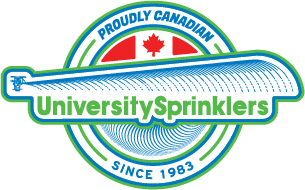Drip Irrigation, Rain Sensors and Water Saving Heads
There Are Easy Ways To Save Water, Without Sacrificing Your GardenConvert to Drip Irrigation And Save Water
In the summer of 2001 the southern portion of Vancouver Island was hit with extremely low reservoir levels. In the ensuing months in a scramble to save water, watering grass was 100% banned. However, all was not lost, since gardens were still allowed to be watered with drip irrigation only.
Point-source Drip Irrigation
Retrofitting spray-style zones to drip zones is a fantastic idea that saves water and waters plants in the most efficient automatic form possible today. Drip irrigation in the landscape can take a number of forms: for gardens with few shrubs and perennials planted throughout, “point-source” drip irrigation is usually best suited. This particular design uses one or two emitters per plant, their output sized relatively with other plants on that drip zone so that large shrubs receive more water than smaller ones.
Grid Drip-line Installation
Another form of drip irrigation that is more commonly used for more densely planted shrub, groundcover, perennial and lawn plantings is a system of liner grid drip-line installation. In this system, 1/2″ tubing with drip emitters spaced at 12″ or 18″ intervals is buried just below the surface. The drip tubing is installed in rows, usually 12″ or 18″ apart running parallel until the entire garden is covered with a “grid” of tubing. Copper tubing by Rainbird provides unmatched resistance to root intrusion, chemicals, algae growth and UV damage, guaranteeing a durable and long lasting solution.
Micro Spray Irrigation Systems
Another option available for conversion of spray-style patterns are micro spray irrigation systems. These sprays are similar to the normal spray-style patterns, except on a much smaller level, with a spray pattern radius of 1′ – 2′. Also available in this class of sprinklers are multiple stream bubblers, the difference being they usually have a 3′ – 4′ a radius pattern and they emit multiple streams rather than fan-style sprays. Micro irrigation is usually used for dense plantings with minimal root structure, like annuals.
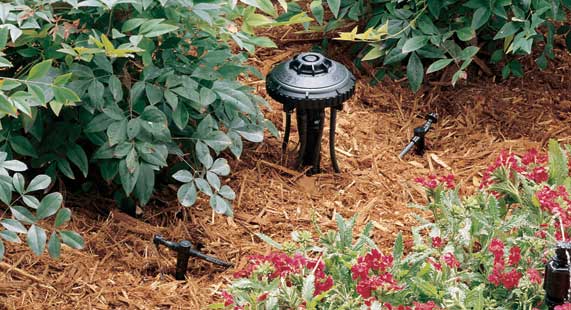
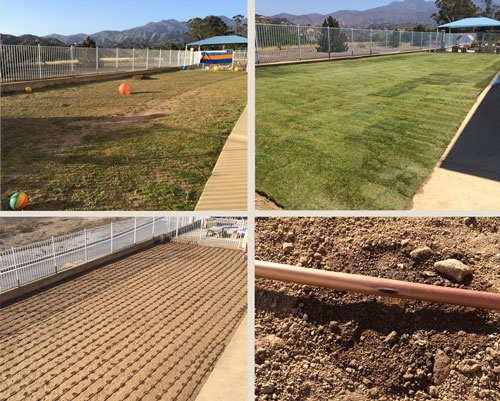
Water Saving Heads and Spray Nozzles
You can save money and water just by selecting the right products.
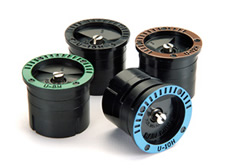
U-Series Spray Nozzles
Use 30% Less Water
The patented U-Series nozzle is the first plastic nozzle with a second orifice for close-in watering and more uniform water distribution. Its unique patented design cuts watering times, saves water and money, and reduces waste.
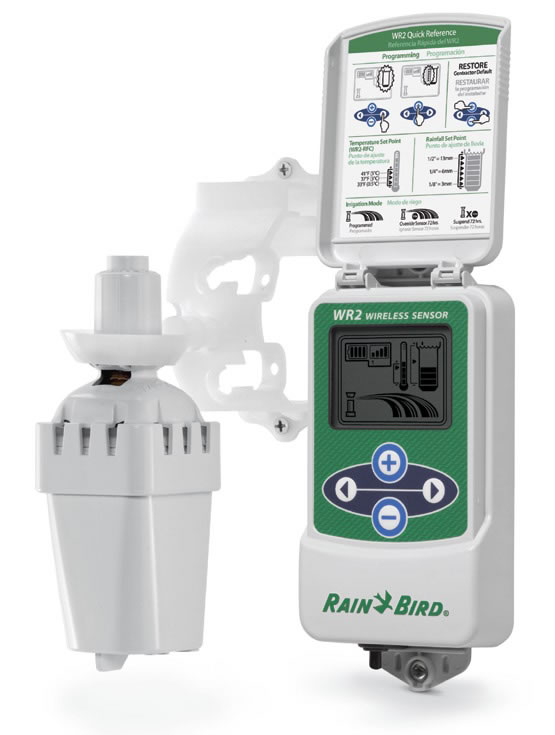
Rain Checks
Automatic Rain Shutoff
The Rain Check is indispensable in all automatic irrigation systems for residential use. It monitors rainfall levels and automatically overrides the controller to prevent unnecessary irrigation cycles. Now available in a wireless model.

PRS Series Rotors
No More Misting and Fogging
A patented PRS pressure regulator built into the stem of this head actually saves water by reducing the excess water pressure and flow exiting the head, leaving nothing more than the perfect operating pressure for each nozzle.
The pressure reduction feature ends misting and fogging caused by high lateral line pressure. This stops water waste and ensures that necessary watering occurs in high pressure or wind conditions. For the average garden zone that has a fog or mist around it, (running 10 minutes per day, 6 days per week, and 3 months per year) the water wastage can add up to thousands of gallons per year for just that one zone! For commercial sites, or homes that are metered, these savings can add up to hundreds of dollars per year.
The PRS head also restricts water loss by up to 70% if the nozzle is removed or damaged, which saves water and money, and reduces possibility of accidents and property damage. .
PRS heads are easily retrofit to any manufacturers spray heads.
That Sounds Easy.

